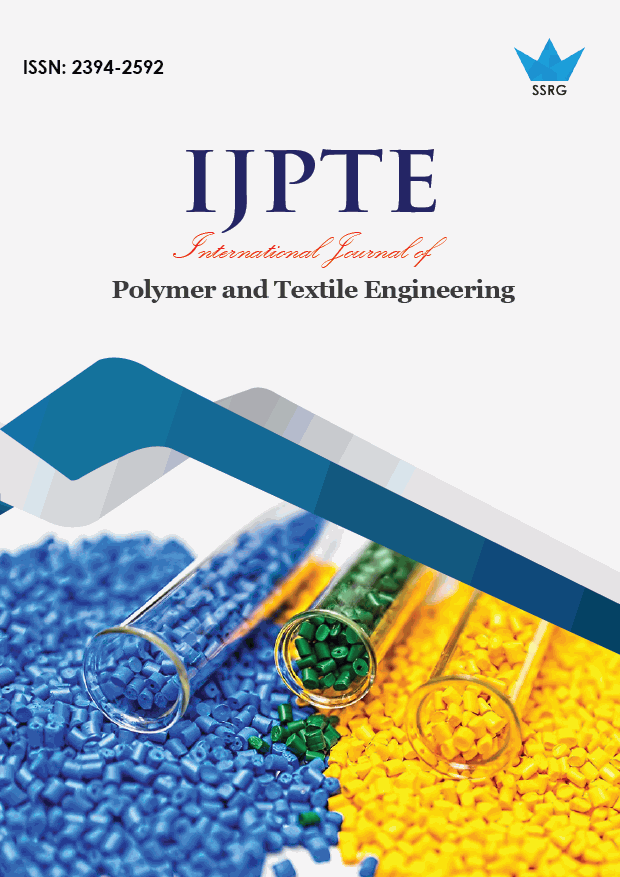Analysis of sewing defects and control measures for apparel industry

| International Journal of Polymer and Textile Engineering |
| © 2020 by SSRG - IJPTE Journal |
| Volume 7 Issue 2 |
| Year of Publication : 2020 |
| Authors : Dr.P.P.Gopalakrishnan |
How to Cite?
Dr.P.P.Gopalakrishnan, "Analysis of sewing defects and control measures for apparel industry," SSRG International Journal of Polymer and Textile Engineering, vol. 7, no. 2, pp. 18-24, 2020. Crossref, https://doi.org/10.14445/23942592/IJPTE-V7I2P104
Abstract:
Sewing is the stage in apparel manufacturing process sequence where large number of work force is employed compared to other stages of manufacturing processes. The quality of garments made in sewing depends upon various factors such as skill of sewing machine operator, machine settings, fabric and thread quality etc. Since many factors involved in determining the quality of product, possibility for occurrences of defects is also very high. In order to achieve maximum productivity and efficiency in sewing room, it is important to control and minimize the defects in sewing process. In this project an attempt is made to study the various defects occurs in sewing room for 10 different garment styles. The data collected has been analysed and suitable remedial measures have been supported. The study reveals but there is scope for improvement of productivity by effective management and quality of production.
Keywords:
Sewing, Defects, Garment Styles .
References:
[1] http://hdl.handle.net/20.500.11948/2871
[2] S. M Masum Alam & Dr. Mohammad Nurul Huda, Global, Journal of Researches in Engineering: J General Engineering, Volume 18 Issue 1 Version 1.0 Year 2018
[3] https://www.researchgate.net/publication/325030522_The_study_of_sewing_damages_and_defects_in_garments
[4] Choudhary, A. & Sikka, Monica & Bansal, Payal.(2018),”The study of sewing damages and defects in garments”. Research Journal of Textile and Apparel. 22. 10.1108/RJTA-08-2017-0041.
[5] https://www.fibre2fashion.com/industryarticle/3092/defects-in-garments
[6] https://www.onlineclothingstudy.com/2019/04/148-garment-defects-found-in-readymade.html
[7] Tincher, W.C., Daley, W. and Holcomb, W. (1992), "Detection and Removal of Fabric Defects in Apparel Production",” International Journal of Clothing Science and Technology”, Vol. 4 No. 2/3, pp. 54-65. https://doi.org/10.1108/eb002994
[8] http://lib.buet.ac.bd:8080/xmlui/bitstream/handle/123456789/4939/Full%20Thesis.pdf?sequence=1&isAllowed=y
[9] https://www.ijser.org/researchpaper/Analysis-of-Major-Defects-Position-and-Percentage-in-Sewing-Lines-of-a-Garments-Factory-with-the-Help-of-Pareto-Chart-Cause-Effect-Diagram-and-Sigma-Level.pdf
[10] Taposh Kumar Kapuria , Mustafizur Rahman, Shuvo Haldar , “Root Cause Analysis and Productivity Improvement of An Apparel Industry in Bangladesh Through Kaizen Implementation” , J. Appl. Res. Ind. Eng. Vol. 4, No. 4 (2017) 227–239

 10.14445/23942592/IJPTE-V7I2P104
10.14445/23942592/IJPTE-V7I2P104